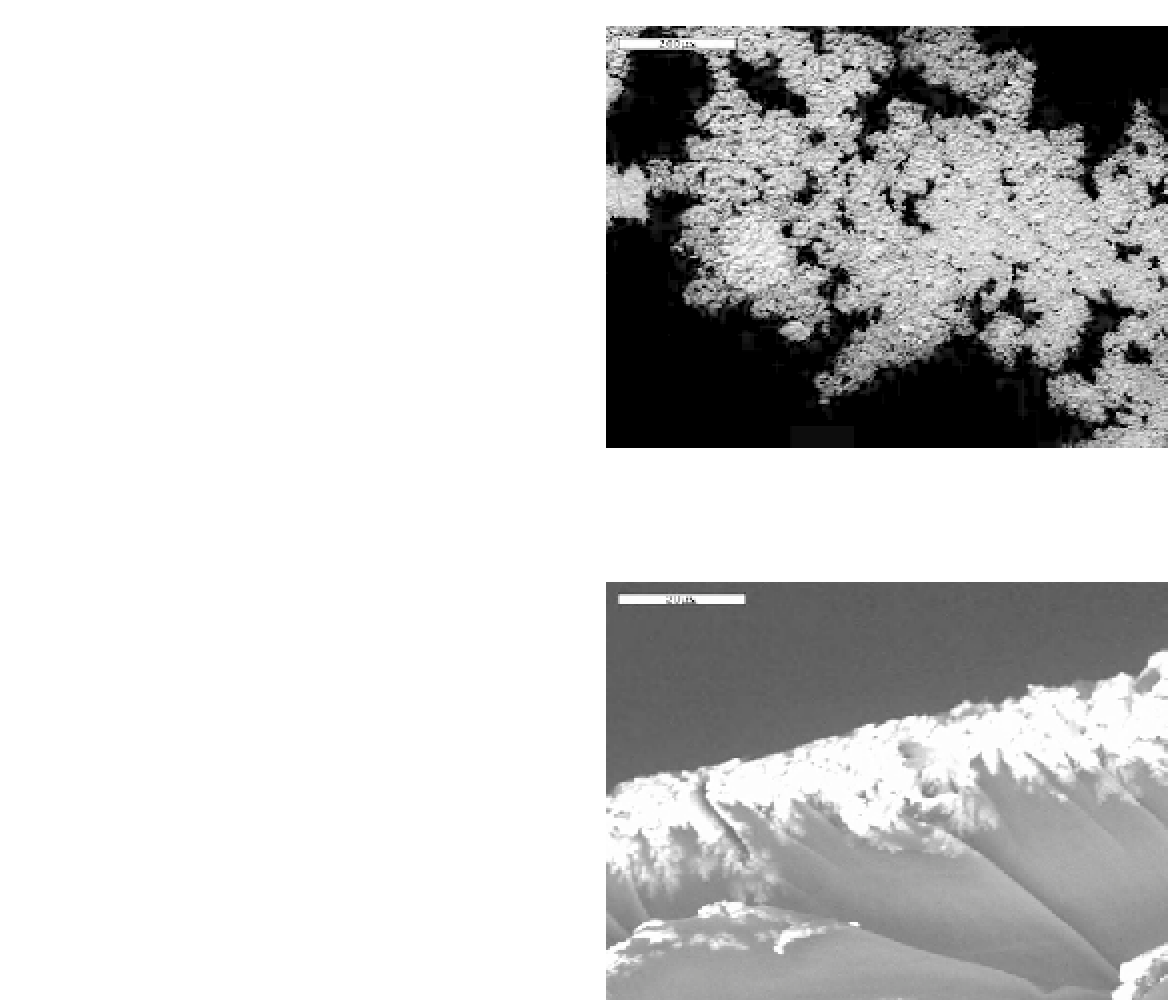Biomedical Engineering Reference
In-Depth Information
The membrane will then be ready to be chemi-
cally plated by the following redox procedure:
1. The membrane material surfaces are
roughened to increase the surface density
and allow better molecular diffusion during
oxidation and reduction processes to
chemically plate the membrane with a metal
to serve as an effective electrode. These
steps include sandblasting, glass bead
blasting, or sandpapering the surface of the
biopolymer membrane to increase the
surface-area density where platinum salt
penetration and reduction occurs.
2. Ultrasonic cleaning and chemical cleaning
by acid boiling (HCl or HNO
3
-low concen-
trates) is carried out next.
3. The ion-exchanging process is incorporated
using a metal complex solution such as
tetra-amine platinum chlorides hydrate as an
aqueous platinum salt such as ([Pt(NH
3
)
4
]Cl
2
and [Pt(NH
3
)
6
]Cl
4
), or gold complexes such
as dichlorophenanthrolinegold (III) chloride
Au(phen) Cl
2
]Cl, or ammonium tetrachloro-
aurate (III) hydrate NH
4
AuCl
4
·
XH
2
O in
solution. Although the equilibrium condition
depends on the types of charge of the metal
complex, such complexes have been found to
provide good electrodes.
4. Here we perform the initial making of
platinum ionic biopolymer nanocomposites,
beginning with reducing the platinum
complex cations to a metallic state in the form
of nanoparticles using effective reducing
agents such as an aqueous solution of sodium
or lithium borohydride (5%) at favorable
temperature (i.e., 60 °C). Platinum black-like
layers deposit near the surface of the material.
5. The final step (surface electrode placement
process) is intended to effectively grow
platinum (or other novel metals of a few
micron thickness) on top of the initial plati-
num surface to reduce the surface resistivity.
Although the equilibrium condition depends
on the type of charge of the metal complex,
FIGURE 6.3
Fractal nature of reduced platinum within
the chitosan/Nafion®.
®
.
FIGURE 6.4
An SEM of an IBMC treated with a dispers-
ing agent PVP.
such complexes were found to provide good
electrodes.
Figures 6.3 and 6.4
depict the fractal
nature of platinum reduction within the
macromolecular network. Note that platinum
reduction within the macromolecular network
nanoclusters branches out continuously to create
fractal structures, as shown in
Figure 6.3
.
Figure 6.4
depicts a scanning electron micro-
graph (SEM) of a chitosan/Nafion®
®
sample
treated with a dispersing agent (polyvinylpy-
rolidone, or PVP).

